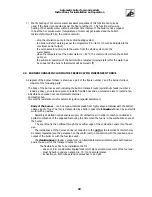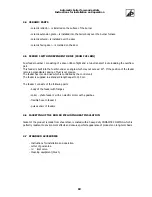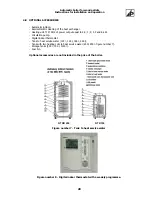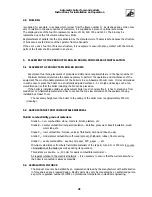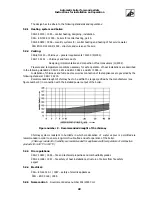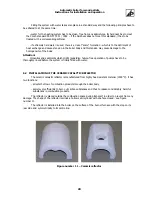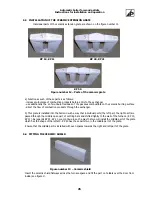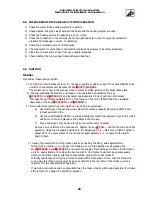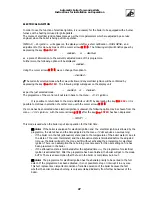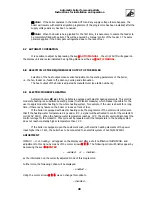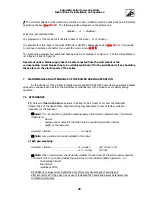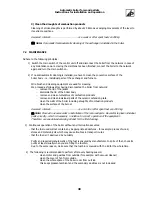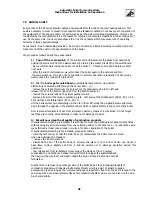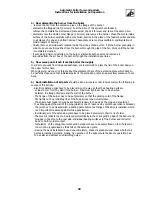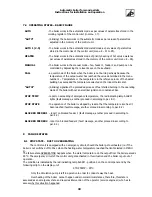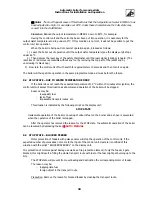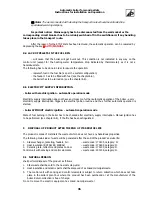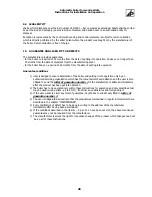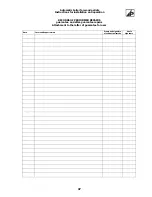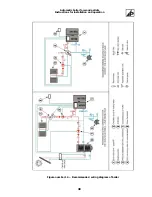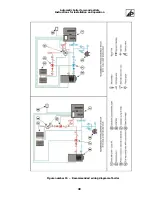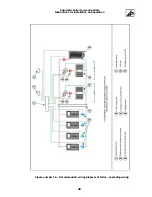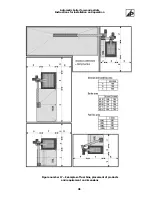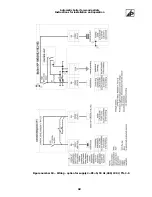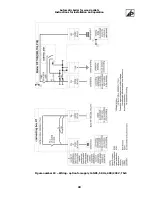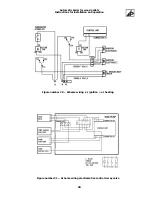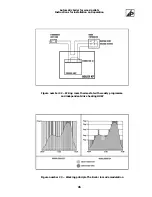
Automatic boiler for wood pellets
Instructions for installation and operation
7.3 ANNUAL AUDIT.
Every boiler of the KP series should undergo annual audit after the end of the main heating season. This
audit is necessary in order to prevent from possible non-standard conditions in the next year of operation of
the equipment. If the annual audit is not performed as per the below mentioned programme, this may be
considered by the manufacturer to be the reason for rejection of guarantee conditions in the second year of
use. At the same time, the user gets exposed to a risk of any failure which may cause loss of operating
certainty or large physical damage.
Annual audit - due to demanding activities - has to be entrusted to a trained servicing company which will
make record of the audit in the documentation of the boiler.
We proceed as follows during the annual audit:
1/ Turn off the main switch
of the control unit and disconnect the boiler from network by
pulling the mains cord from the wall socket or by turning the socket circuit off in the switchboard
- As we will also work inside the boiler, let us the boiler 2 - 3 hours to cool down before we start
next work.
- After the end of maintenance, we will connect the boiler again to the network and turn
the main switch on. If we do not use the boiler in summer operation (preparation of hot service
water), leave the main switch turned off.
2/
After the
boiler gets cooled down
to acceptable temperature, we will start
dismantling of ceramic parts through the burner door - i.e.:
- remove the ceramic shield over the burner door (by gradual moving to the left and
release it then to the bottom right side from the fixation aperture)
- remove the ceramic reflector by simple pulling forward
- remove all parts of the ceramic extension grate - first pull out the middle parts (KP 20, KP 21, KP
50) and then both lateral parts (KP 10, KP 11).
Lift the parts always perpendicularly up, then turn them 90° along the longitudinal axis and lower
down through the opening in the placement bars which is approximately in the centre of the boiler.
Now remove all sediments of ash from all ceramic parts by means of a wire brush. Do not forget
that they are ceramic. Work carefully in order not to damage the parts.
3/ We will now clean the draughts of combustion products
If semiautomatic cleaning is installed, it is sufficient to move the handling lever about twenty times
without using any special violence from one extreme position to the other one - i.e. about the same
we performed at least once a week in course of common operation of the boiler.
If semiautomatic cleaning is not installed, proceed as follows:
- close the burner door so that the boiler does not contaminate the boiler room too much
when we will clean the draughts
- remove the lid of the jacket
- dismantle the lid of the boiler body (4 screws) and place it on the floor. When you mount it
back later, remove slightly ash from it and be careful not to damage insulation during this
operation.
- now release ash from turbulators. Grasp always the whole set (6 or 7 pieces)
suspended on one holder and shake it several times to release the sedimented ash,
then pull out the whole set and clean outside the boiler. Proceed in this way with all
turbulators.
Another step is to clean the exchanger part of the boiler body. Clean individual draughts of
combustion products with cleaning instruments (brush) which is a part of serially supplied
accessories. Clean as long as the corresponding space is perfectly free from any ash. Proceed in the
same way when you clean lateral surfaces of combustion chamber where you can also use the wire
brush successfully.
31
Summary of Contents for KP 10
Page 1: ......


